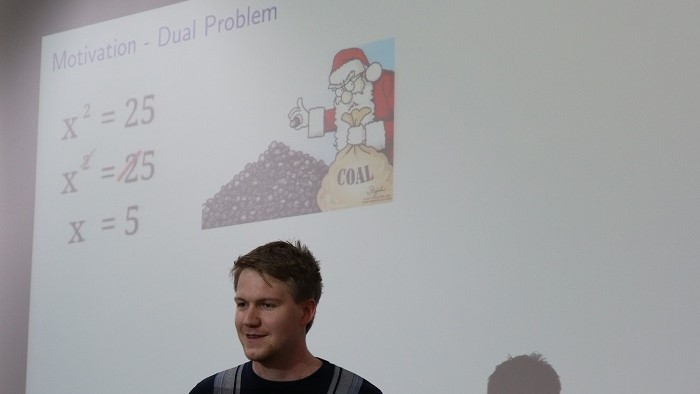Christmas wrapping paper know-how
We all know the scenario: either you buy too much Christmas wrapping paper, next year you buy even more and your cupboards and drawers are blocked for years on end. Or you don’t have enough of the stuff, and have to brave the pre-Christmas crowds to get some at the last minute. A much more efficient way of dealing with this problem was presented by Nathanael Schilling, two weeks before Christmas, so to speak at the best time for buying your wrapping paper! All you need, is paper, a pencil and a bit of mathematical deliberation.
Christmas presents, Christmas baubles, isoperimetry
Already in ancient times it was suspected that circles are the shape with the smallest perimeter for a given area, and this indeed turns out to be true. In fact, in any dimension the surface area of an object of fixed volume must be at least as large as that of a sphere of the same volume. As a consequence, giving spherical presents minimizes the amount of wrapping paper needed. We may of course nevertheless be more used to seeing round ornaments on a Christmas tree as opposed to round presents under it; but what gives these such a mathematically simple shape? Perhaps surprisingly, the reason is, that Christmas ornaments begin their existence as bubbles blown out of molten glass, in a process quite similar to the creation of soap bubbles. Due to the underlying physics, such bubbles take on the shape that minimizes surface area – a sphere.
Considerations like these form the core of the theory of isoperimetry (greek for "same perimeter"). In this year's TopMath talk, two proofs from the literature of the mathematical result mentioned in the beginning of the previous paragraph were presented. The aim was to give the listeners a feel for some concepts related to isoperimetry, together with connections to the Christmas season. Whether or not the audience took the ideas to heart and only wrapped spherical Christmas presents this year has so far not been investigated.
Text: Katja Kröss und Nathanel Schilling, Elite Graduate Program "TopMath"


